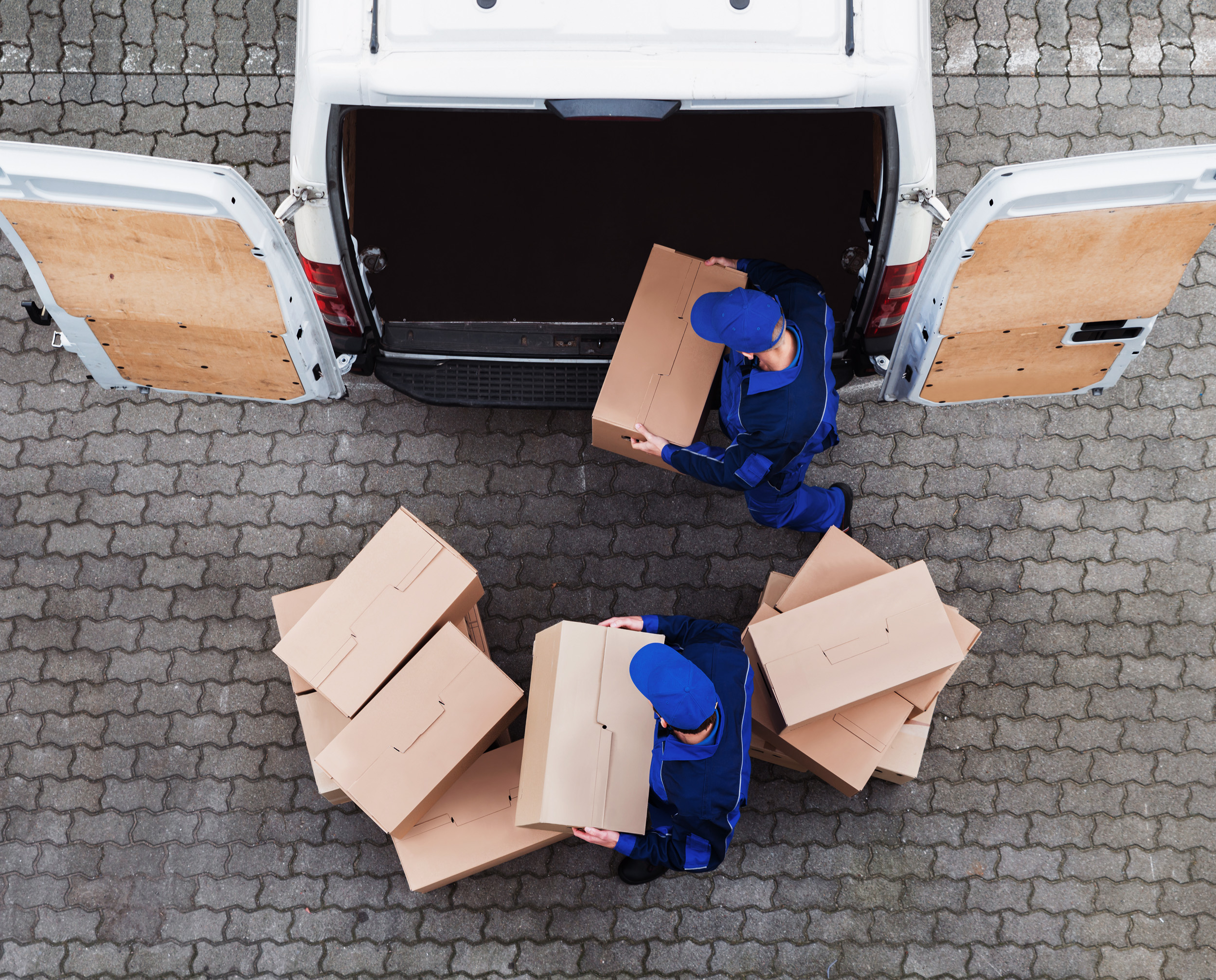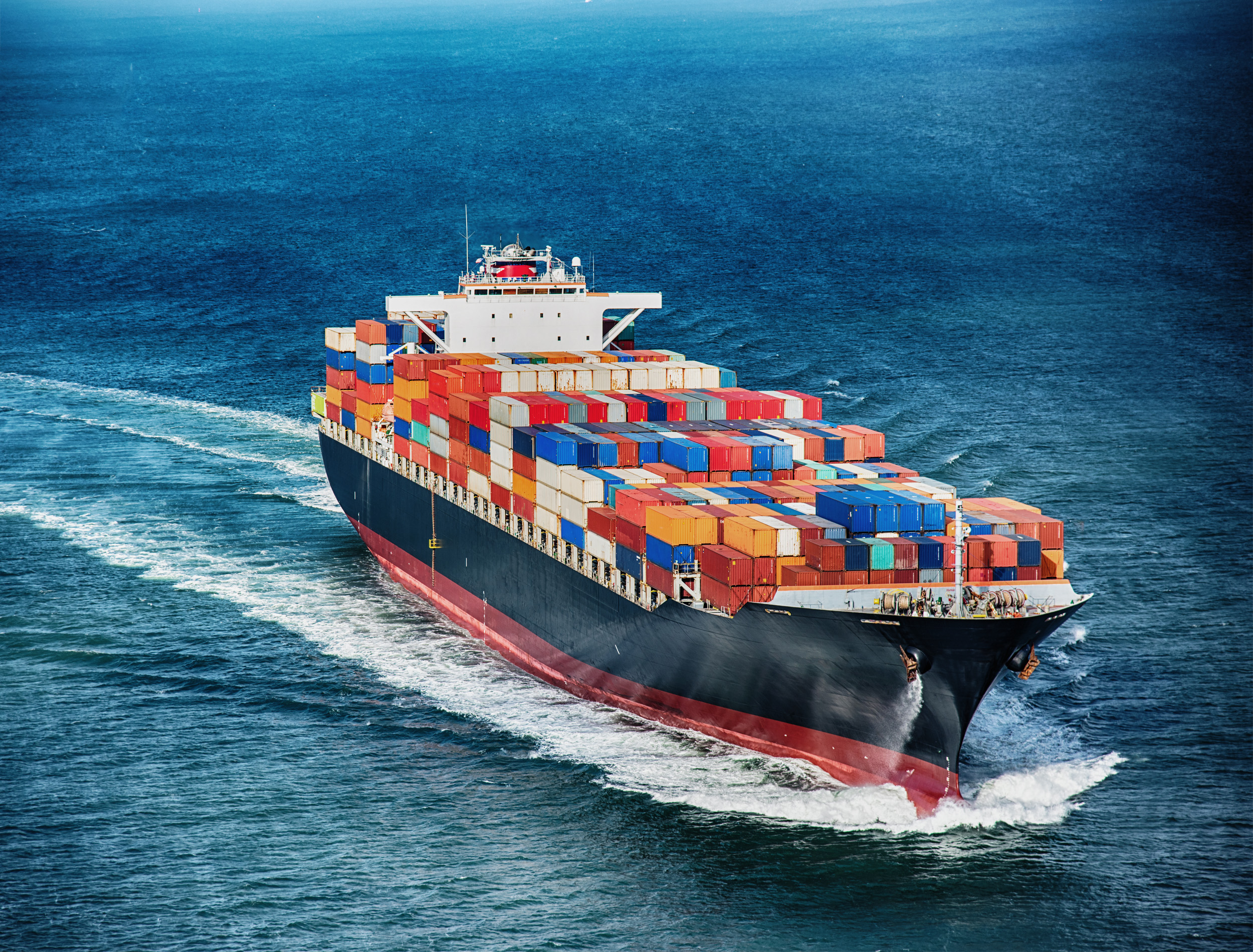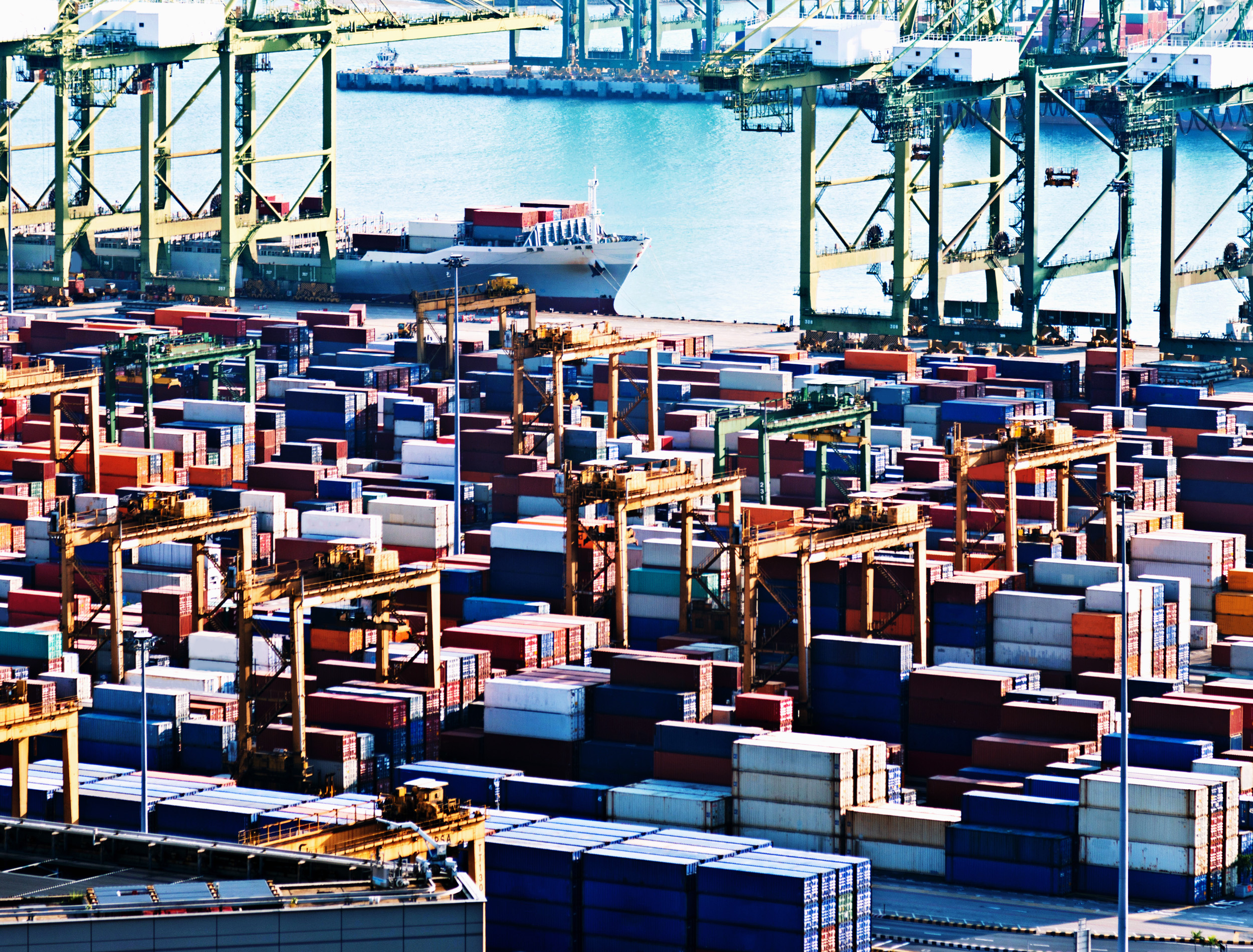Transport is an aspect of the carbon footprint of food that gets a disproportionate amount of attention from the public. Ever since the term ‘food miles’ was coined in the 1990s, much of the discussion in the media about the carbon footprint of food has focused on the impact of transport. In fact, though, the contribution of transport-related emissions to overall emissions is relatively small for many kinds of food.
Coffee beans travel long distances by ship, the most carbon-efficient mode of transport.
Large distances are involved with a globalised supply chain but as it turns out, the mode of transport is more important than the distance traveled. European consumers may intuitively expect that transporting a product from the Americas will result in more emissions than transporting it from the Mediterranean — but, depending on how the product is transported, the reverse can be true (Coley et al 2011). In fact, driving to the supermarket to pick up air-freighted vegetables can result in more greenhouse gas emissions than the air freighting itself does (Saunders 2011). Transport by ship, which is the case for nearly all green coffee, is the most carbon-efficient mode of transport (OECD Observer 2008).
Another reason food miles get so much attention is that the emissions from the ‘last mile’ of transport — in other words, the trucks that deliver it from the distribution centres to the shops or the cars that consumers drive to the shops — are so visible to consumers. The last mile is one of the most polluting parts of the whole transport chain. Reducing the emissions from the last mile mainly relies on changing consumers’ behaviour — for example, by encouraging them to use other means of transport rather than cars. When it comes to groceries, home delivery services can be more carbon-efficient than consumers travelling to the shops. Researchers modelling the carbon footprint of ‘last mile’ transport found that home deliveries are more carbon-efficient, as long as each truck services at least 30 households in one delivery run (Brown and Guiffrida 2014).
 Home delivery services can be more carbon-efficient than travelling to the shops to purchase goods.
Home delivery services can be more carbon-efficient than travelling to the shops to purchase goods.
Even when the ‘last mile’ is taken into account, the contribution of transport and distribution to the carbon footprint of coffee is small. The life-cycle analysis of coffee produced by Tchibo in Germany, for example, took into account the emissions of the consumer travelling 5 kilometres by car to buy the coffee (PCF Pilotprojekt Deutschland, 2008). This study found that the overall contribution from all of the transport and distribution stages made up just over 7% of the total emissions of a cup of coffee — and nearly half of that resulted from the consumer’s drive to the shop.
Numerous other studies mirror these findings, concluding that transport makes a ‘negligible’ (Usva et al 2020) or ‘very limited’ (Salomone 2003) contribution to the overall carbon footprint of coffee.
Salomone points out that collecting accurate data about distribution and consumer behaviour in consuming countries is difficult, however, and for this reason the impact of this part of the emissions relating to transport may be underestimated. It makes sense for a coffee roasting company to focus on reducing the emissions relating to product distribution, Salomone says, because this is the easiest intervention to make at the company level. One example of such an emissions-mitigating action could be to upgrade the vehicles used for distribution.
Reducing the environmental impact of long-distance transport is more complicated, since ships are already relatively carbon efficient, and carry lots of different goods together, which may have different requirements. However, the shipping industry contributes about 3% of the world’s total greenhouse gas emissions, and therefore there are still significant gains to be made. ‘Black carbon’ particulates from engine exhaust make up more than one-fifth of the total global emissions, so cleaner fuel or improved engine design can reduce emissions significantly.
Another approach, called ‘slow steaming’, involves running the ships at less than maximum speed. The increased transport time reduces the overall capacity, but even when the environmental impact of building new ships to compensate is factored in, reducing the fleet’s speed by 10% could lead to overall CO2 savings of 19%.

